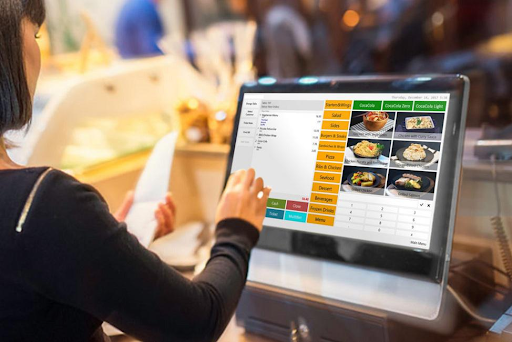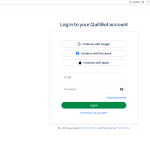Integrating Delivery & Online Orders into Your Restaurant POS System
varsha October 14, 2025 0 COMMENTS
A decade ago, dining out meant sitting at a table, waiting for a server, and enjoying your meal immediately. Today, restaurants are more than physical dining spaces—they’re digital hubs. Customers place orders through mobile apps, third-party delivery platforms, and websites, expecting seamless service regardless of the method they use. This shift has made one tool indispensable: the restaurant POS system.
In 2025, the modern restaurant POS is no longer just a cash register with digital flair. It’s the backbone of operations, connecting online and offline orders into one smooth workflow. For businesses juggling dine-in, delivery, and takeaway, integrating these channels into a single POS isn’t just smart—it’s essential for survival.
Table of Contents
What Happens Without Integration?
Picture this:
- The kitchen staff are busy fulfilling dine-in orders.
- At the same time, a tablet from a delivery app buzzes with a new order.
- Someone scribbles it down or manually re-keys it into the POS.
- Meanwhile, another order comes through from a different platform, adding to the pile.
What happens next? Mistakes: forgotten items, incorrect modifiers, delayed prep. Not only does this frustrate customers, but it also leads to negative reviews, refunds, and the waste of ingredients. Over time, it erodes revenue and reputation.
The Real Process of Integration
Simply, POS integration serves as an intermediary between your ordering systems and restaurant processes. The following is what goes on in the background:
- Order capture: Online/app-based orders are sent to the POS.
- Kitchen display: Orders are automatically displayed on the kitchen display system (KDS) in the same format as in-house tickets.
- Inventory monitoring: The POS system monitors inventory in real-time, preventing the embarrassment of selling items that cannot be produced.
- Delivery coordination: The system would be able to synchronise with delivery partners and view their estimated delivery time and driver status.
They do not have to run around to manage multiple screens; instead, they can prepare meals and provide a great customer experience.
The Advantages of an Integrated Restaurant POS System
- Accuracy at Speed
Some errors can occur due to manual entry. Integration ensures that all details, such as preferred sauces and additional toppings, are delivered to the kitchen in the manner in which the customer ordered them.
- Time-Saving for Staff
Minimised manual work will enable employees to serve diners more frequently and spend less time reconciling delivery apps.
- Powerful Reporting and Insights
Online and offline sales are managed using the same system, thus making reporting more effective. The owners can understand which channels generate the highest profits, which menu items are best delivered, and even monitor the busiest times for ordering.
- Happier Customers
Quick, punctual, and hassle-free orders will result in improved customer satisfaction—and, consequently, enhanced delivery app reviews.
- Scalability
With the expansion of restaurants, a new POS enables you to add new channels, such as an app that allows customers to earn loyalty points, a new delivery service, or a click-and-collect feature, without interfering with existing workflows.
What to Consider in a POS with Delivery Integration
Not all POS systems are created equal. Restaurant owners should find:
- Multi-channel compatibility: Does it support the entire range of the major delivery platforms used by your customers?
- Real-time menu updates: Does it have the ability to update menus in real-time, for dine-in, delivery, and online orders?
- Smart reporting: Does it break down revenue by channel?
- User-friendliness: It is essential that the staff can easily adopt it; hence, your solution must be easy to use, not complex.
- Flexibility with the cloud: The new POS systems enable owners to update and monitor operations anywhere.
Real-World Example: The Hybrid Restaurant
Picture a small pizzeria. On a Friday night, they’ve got a line of dine-in customers, a dozen delivery orders through Uber Eats, and a stream of pickup orders from their website. Without integration, chaos reigns—staff scribble notes, input orders twice, and try to keep track of it all.
With an integrated restaurant POS system, everything is centralised: orders flow into the same queue, the kitchen sees them in real-time, and delivery partners are updated automatically. Customers enjoy faster service, staff stay calmer, and the owner ends the night with accurate data on sales performance.
Conclusion: One System, Endless Possibilities
Delivery and online orders are no longer “extras” for restaurants—they’re core revenue streams. The only way to manage them effectively is through a unified restaurant POS system that integrates all channels into one seamless operation.
By doing so, restaurants can reduce errors, speed up service, empower staff, and create a dining experience that meets customers where they are—whether that’s at a table, on a smartphone, or waiting at their front door.
The restaurants that succeed in 2025 won’t just excel in food; they will also excel in other areas. They’ll excel at integrating technology, ensuring every order—regardless of how it’s placed—feels seamless and satisfying.
RELATED ARTICLES
Latest Articles
 Fappelo Features Every Digital Creator S…In General
Fappelo Features Every Digital Creator S…In General Anjali Arora Net Worth, Cars, Career �…In General
Anjali Arora Net Worth, Cars, Career �…In General The Power of Custom Metal Keyrings in Bu…In Tips
The Power of Custom Metal Keyrings in Bu…In Tips What Does 1st 2nd and 3rd Mean on Linked…In Technology
What Does 1st 2nd and 3rd Mean on Linked…In Technology TimeForge Login Guide: Easy Access, Mobi…In General
TimeForge Login Guide: Easy Access, Mobi…In General QuillBot Login Guide: Free & Premiu…In General
QuillBot Login Guide: Free & Premiu…In General Short Funny Sarcastic Work Quotes to Bri…In General
Short Funny Sarcastic Work Quotes to Bri…In General How to Stay Safe Online in the Digital A…In Technology
How to Stay Safe Online in the Digital A…In Technology
stopie.com is a participant in the Amazon Services LLC Associates Program, an affiliate advertising program designed to provide a means for sites to earn advertising fees by advertising and linking to Amazon.com.
Clicking on an Amazon link from stopie.com does not increase the cost of any item you purchase.
We will only ever link to Amazon products that we think our visitors may be interested in and appreciate learning more about.



